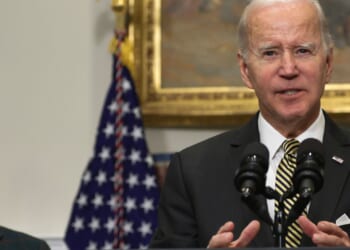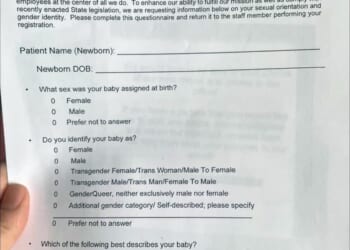The United States Department of Agriculture (USDA) is withdrawing a proposed rule which would have limited the amount of salmonella bacteria permitted in poultry and turkey, the agency announced Thursday.
The Food Safety and Inspection Service (FSIS), a USDA subagency, made the decision after receiving significant feedback during a period of public comment, FSIS said in its announcement.
The issue most commenters took exception to was whether FSIS had the legal authority to propose or enforce the set of regulations required to implement the rule.
Another issue the public comment period raised was the impact the rule would have on small poultry farms and processors. (RELATED: Trump Admin To Ban Artificial Food Dyes Linked To Cancer)
Republican Kentucky Rep. Thomas Massie, who sits on the House Committee on Transportation and Infrastructure’s Water Resources and Environment Subcommittee, raised concerns about how the rule would impact small businesses.
“The proposed regulation, like many USDA regulations, would benefit giant processors by making it harder for inherently healthier independent poultry processors to exist,” Massie wrote in a Friday post on X.
This is a post meant to mislead MAHA folks. First of all, the USDA can’t prevent or eliminate salmonella.
The proposed regulation, like many USDA regulations, would benefit giant processors by making it harder for inherently healthier independent poultry processors to exist. https://t.co/U9YzLes9II
— Thomas Massie (@RepThomasMassie) April 25, 2025
The rule proposal would have identified chicken products as “adulterated” — and therefore unfit for commerce — if they contained any type of salmonella at or above 10 colony forming units per milliliter or gram. They also would consider a product adulterated if it contained any one of the three most virulent strains of salmonella.
Currently FSIS safety standards assess poultry products by a maximum acceptable positive percent of salmonella. That standard is 25 percent for comminuted chicken (chicken which has been mechanically separated from the bone) and 15.4 percent for chicken parts.
Some industry groups praised the USDA decision. The National Chicken Council said the rule would have increased costs and food waste, according to The Associated Press (AP).
“We remain committed to further reducing salmonella and fully support food safety regulations and policies that are based on sound science,” Ashley Peterson, the National Chicken Council’s senior vice president of science and regulatory affairs, told AP.
Others, however, viewed the move as likely to cause more salmonella outbreaks. Sandra Eskin, a former USDA official who helped draft the rule, bashed the Trump administration and the Make America Healthy Again (MAHA) movement for the rule reversal.
It “sends the clear message that the Make America Healthy Again initiative does not care about the thousands of people who get sick from preventable foodborne salmonella infections linked to poultry,” she told AP.
Salmonella contamination in poultry products dropped significantly since FSIS introduced a 1996 plan to reduce pathogens, but infections in humans have consistently hovered around 1.35 million U.S. cases each year for the past two decades, according to FSIS.


![NYC Tourist Helicopter Falls into Hudson River, Siemens Executive and Family Among Those Killed [WATCH]](https://www.right2024.com/wp-content/uploads/2025/04/NYC-Tourist-Helicopter-Falls-into-Hudson-River-Siemens-Executive-and-350x250.jpg)







![Green Day’s Cringe Trump Diss Ends in Fire and Evacuation [WATCH]](https://www.right2024.com/wp-content/uploads/2025/04/Green-Days-Cringe-Trump-Diss-Ends-in-Fire-and-Evacuation-350x250.jpg)
![Trump’s White House Trolls Illegal Alien Gangs With Hilariously Brutal Video [WATCH]](https://www.right2024.com/wp-content/uploads/2025/03/1742261427_Trumps-White-House-Trolls-Illegal-Alien-Gangs-With-Hilariously-Brutal-350x250.jpg)





